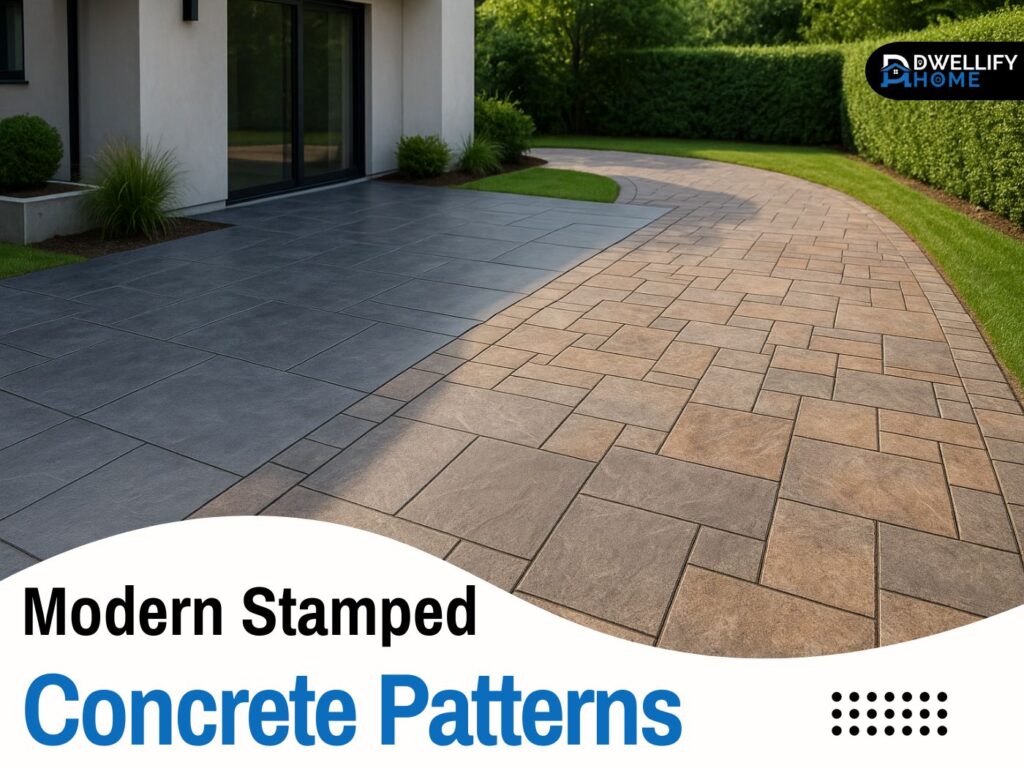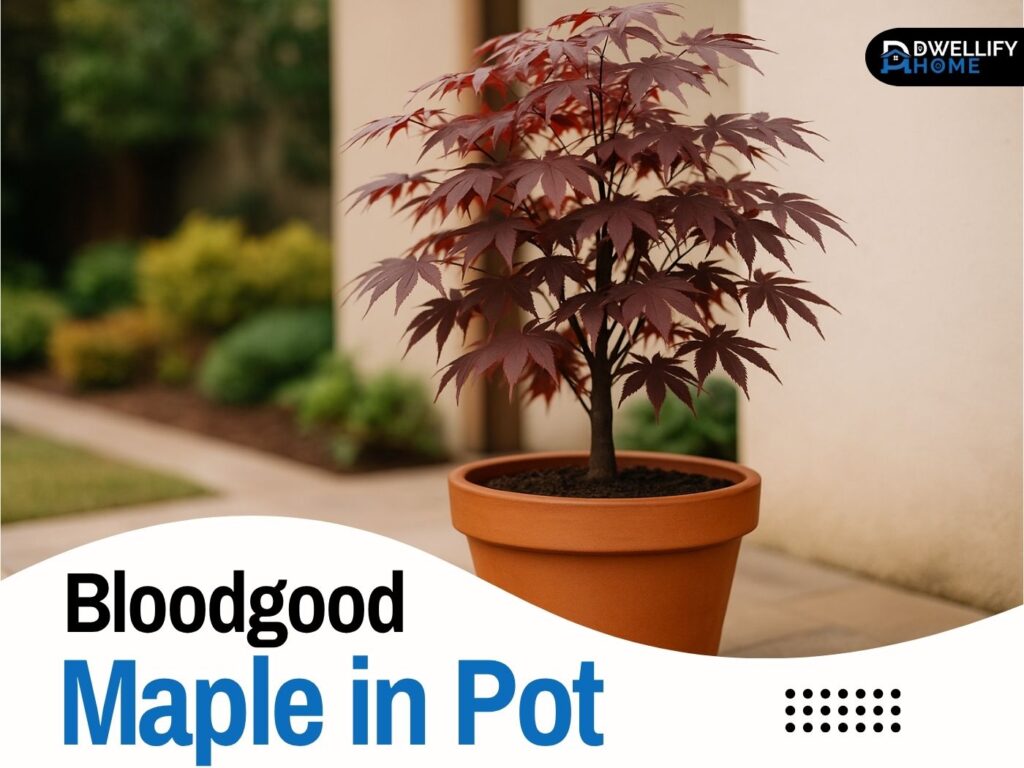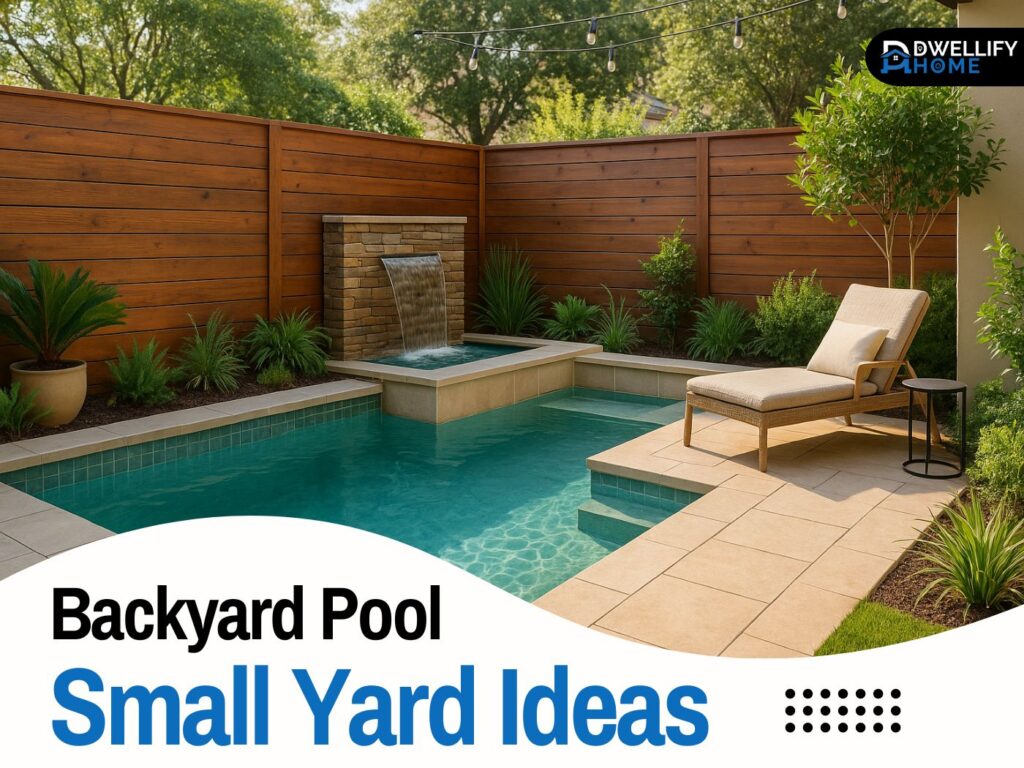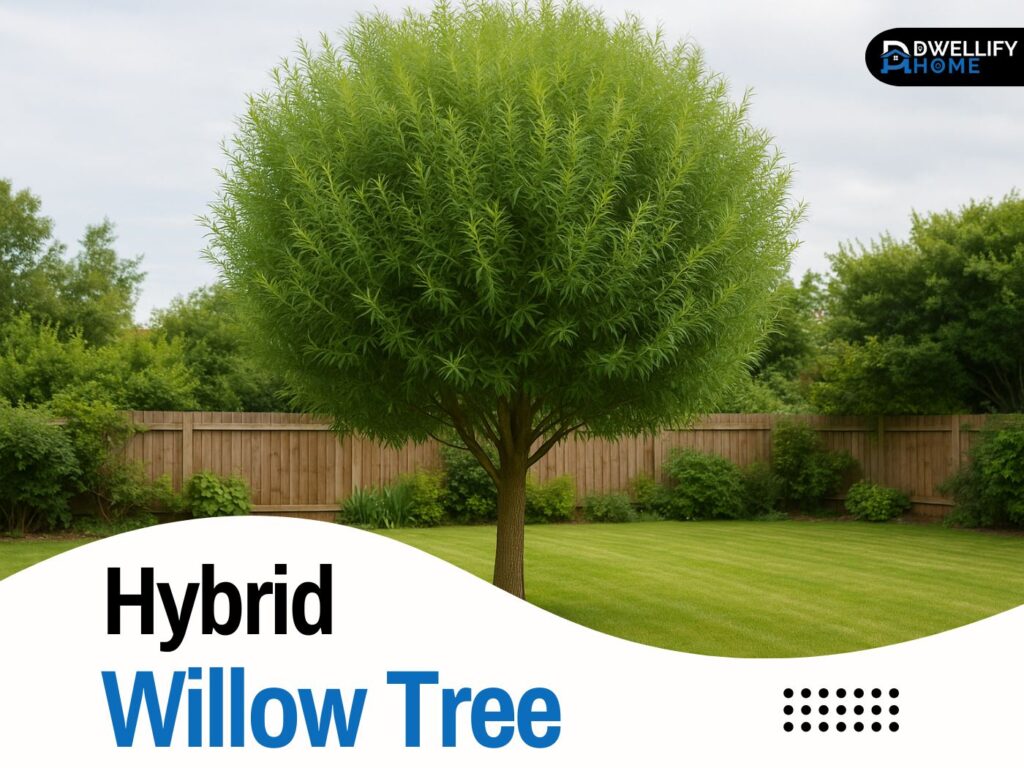If you’ve been dreaming about upgrading your patio, driveway, or walkway, stamped concrete might be exactly what you’re looking for. It’s modern, durable, and can mimic almost any texture or pattern you like. Here’s the thing—modern stamped concrete patterns have come a long way from the traditional cobblestone or brick look. Today, homeowners are turning their outdoor spaces into works of art that feel clean, elegant, and timeless.
Let’s walk through everything you should know about these patterns, from designs and colors to cost, maintenance, and a few insider tips that’ll help you get the best results.
Snippet-Ready Definition:
Modern stamped concrete patterns are sleek, contemporary designs pressed into concrete surfaces to mimic stone, wood, or tile. They enhance patios, driveways, and walkways with elegant style and lasting durability.
Mission Statement:
At Dwellify Home, our mission is to inspire homeowners to design beautiful, durable, and functional spaces. We blend modern design with practical renovation ideas, helping you turn ordinary homes into extraordinary living experiences—one detail at a time.
What Is Stamped Concrete
Stamped concrete is basically regular concrete that’s been imprinted with a pattern or texture while it’s still wet. Contractors use molds or “stamps” to press designs into the surface. Once it sets, it looks like stone, tile, wood, or even slate—but for a fraction of the price.
It’s been around for decades, but what’s changed recently is the creativity behind it. With modern tools, you can get ultra-realistic finishes and unique geometric layouts that blend perfectly with contemporary homes. Whether you’re redoing a patio or driveway, it gives you the beauty of premium materials with the strength of solid concrete.
What Makes a Stamped Pattern Modern
The difference between a classic and a modern stamped concrete pattern comes down to simplicity and tone. Modern designs favor clean lines, symmetry, and subtle textures. Think less “rustic stone” and more “sleek geometric” or “minimal concrete tile.”
Here’s what defines a modern look:
- Smooth, seamless textures with minimal joints
- Larger pattern sizes for a more spacious feel
- Monochrome or neutral color palettes—charcoal, silver, white, or beige
- Geometric layouts like chevron, hexagon, or grid patterns
The best part is, these modern styles blend beautifully with glass doors, metal fixtures, and contemporary landscaping. They create that cohesive “magazine look” every homeowner loves.
Top Modern Stamped Concrete Patterns and Ideas
Here’s where the fun begins. Let’s explore a few modern stamped concrete patterns that can completely change the look of your home.
1. Large-Scale Tile or Plank Patterns
If your goal is to make a small space look big, large-format patterns work wonders. They mimic long tiles or wood planks and give your space a modern, clean aesthetic—perfect for driveways and patios.
2. Geometric Patterns
Shapes like hexagons, diamonds, or chevrons are trending. They feel bold yet organized and are ideal for homeowners who want something unique without going overboard.
3. Linear and Grid Designs
These give your patio that “modern concrete plaza” vibe. Straight lines and perfect grids look fantastic next to minimalist architecture.
4. Seamless Stone Textures
For a smooth and continuous look, seamless texture mats are used. They’re great if you want a modern feel with a hint of natural stone character.
5. Wood-Look Concrete
If you love the texture of wood but don’t want the maintenance, this one’s for you. The surface is stamped to resemble wooden planks but lasts much longer.
6. Hybrid or Mixed Designs
Some homeowners mix stone textures with geometric borders for contrast. It’s creative and gives a very custom touch.
7. Border Accents and Inlays
Adding a darker or lighter tone around the edges makes your surface pop. It’s a small touch but elevates the overall design.
If you look at stamped concrete pictures online, you’ll see endless combinations of these ideas used in modern homes.
Patterns and Colors: The Perfect Combination
When it comes to stamped concrete patterns and colors, the combination can make or break the design. For modern styles, less is more. Shades like cool gray, slate, taupe, or off-white create that sleek, contemporary appeal.
Want something warmer? Try soft beige with a charcoal border. For bold contrast, a two-tone gray works beautifully.
Pro tip: Choose your colors based on your home’s exterior. If you’ve got a lot of wood or brick, use cooler tones to balance it. If your house has glass or metal, warm concrete hues will soften the look.
Contractors often use techniques like color hardeners and antique washes to give depth and texture to the surface. The best part is, once sealed properly, the color stays fresh for years.
Where to Use Modern Stamped Concrete
Stamped concrete isn’t just for patios. It fits almost anywhere around the house.
Patios:
Stamped concrete patio patterns are perfect for outdoor living areas. They’re durable, easy to clean, and can be designed to complement your furniture or landscaping.
Driveways:
A modern stamped concrete driveway instantly boosts your home’s curb appeal. It handles heavy loads while looking like something out of a design catalog.
Pool Decks and Walkways:
Stamped concrete around pools looks stunning and can include anti-slip finishes for safety. Walkways and steps also look great in seamless or geometric designs.
Courtyards and Entryways:
These smaller spaces benefit from decorative accents or mixed borders for a welcoming touch.
Whether you go for modern contemporary stamped concrete patterns for patio or driveway, the goal is the same—a smooth, clean, and lasting impression.
Cost, Value, and Budget Planning
So, how much does a 20×20 stamped concrete patio cost? On average, you’re looking at anywhere between $4,000 and $7,000 depending on the complexity, materials, and region. The more detailed the pattern or color layering, the higher the cost.
A simple design might cost around $10–$15 per square foot, while intricate geometric or multi-color patterns can go up to $25 per square foot.
But here’s the good news—stamped concrete offers one of the best returns on investment among outdoor materials. It’s cheaper than stone, more stylish than pavers, and lasts decades with proper maintenance.
Installation Process and Pro Tips
Installing stamped concrete is an art and science combined. The process goes something like this:
- Site preparation: The ground is leveled and compacted.
- Pouring: Fresh concrete is poured and leveled.
- Coloring: Integral color or color hardener is added for the base tone.
- Stamping: While it’s still wet, texture mats are pressed into the surface.
- Sealing: Once cured, the surface is sealed for protection and shine.
Timing is crucial here. If the concrete dries too soon, the pattern won’t imprint correctly. That’s why it’s best left to experienced professionals who know how to read temperature, moisture, and timing perfectly.
Durability and Maintenance
Stamped concrete is tough, but like everything else, it needs some care. The main enemy is neglect—especially when it comes to sealing.
Here’s how to make it last:
- Reseal every 2–3 years to prevent fading and cracking
- Clean spills quickly to avoid stains
- Use mild soap and water instead of harsh chemicals
- Avoid metal shovels in winter—they can chip the surface
If installed correctly with proper control joints and reinforcement, stamped concrete can easily last 25 years or more. The key is prevention: sealing, cleaning, and a little attention now and then.
Buying Stamps and Tools
If you’re curious about doing a small stamped project yourself, you can find plenty of concrete stamp patterns for sale online. There are two main types—rigid stamps and flexible texture skins.
Rigid stamps are perfect for large driveways or patios where consistency matters. Texture skins, on the other hand, work great for creating seamless stone effects.
You’ll also need:
- Release agents (to prevent the stamp from sticking)
- Color hardeners
- Joint tools and sprayers
- Sealers for protection and shine
Brands like Brickform and Butterfield are trusted in the industry, known for their durability and design variety.
Expert Tips for the Best Finish
Here’s what I tell homeowners from my own experience:
- Always match your pattern to your home’s architecture. A geometric pattern looks best with modern facades, while stone textures work better with traditional homes.
- Ask your contractor about control joints. They’re small cuts that help prevent cracks.
- Avoid glossy sealers for outdoor areas—they can be slippery when wet. Go for a matte or low-sheen finish.
- If you live in a hot region, choose lighter colors to reduce surface heat.
And if you’re mixing materials—like wood decking next to stamped concrete—use colors that visually tie them together.
DIY or Hire a Professional
You can try small stamped projects yourself, but for larger areas like a driveway or patio, it’s worth hiring a pro. Professionals have the tools, timing, and experience to get the depth and texture just right. One wrong move with drying time, and you could end up with uneven impressions or poor color blending.
If budget is tight, you could do the prep work yourself and hire a contractor just for the stamping and sealing stage. That way, you’ll save money without risking the quality.
Comparing Stamped Concrete with Other Materials
Let’s face it—there are tons of outdoor surface options. So why stamped concrete?
Compared to pavers, stamped concrete has fewer joints, meaning less weed growth and maintenance. Against natural stone, it’s far more affordable while offering a similar look. And with the right sealer, it can last just as long.
Stamped concrete is also easier to customize. You can blend colors, patterns, or even add logos and personal touches—something other materials can’t do easily.
Eco-Friendly and Sustainable Choices
Concrete gets a bad rap sometimes, but modern stamped concrete is becoming greener. Many contractors now use recycled aggregates and low-VOC sealers that reduce environmental impact.
You can even opt for lighter, reflective colors to keep your patio cooler in summer, lowering heat absorption. It’s not only stylish but also eco-smart.
Inspiration and Real-World Examples
I once helped a homeowner design a modern stamped concrete patio with large 3×3 grid patterns in charcoal gray. We paired it with sleek outdoor furniture and warm lighting—and honestly, it looked like something straight out of an architecture magazine.
Another client went with a minimal beige tone and a wood-look border for her pool deck. It gave the space a resort-like vibe without needing constant upkeep.
If you browse modern contemporary stamped concrete patterns pictures online, you’ll notice how versatile these designs are—from minimalist walkways to high-end driveways. The options are endless.
Future Trends in Stamped Concrete
Stamped concrete is evolving fast. Contractors are experimenting with:
- Laser-cut templates for sharper, cleaner designs
- 3D printing to create custom texture molds
- Self-healing concrete mixtures that minimize cracking
- Smart sealers that resist UV damage
So if you’re planning a project soon, you’re stepping into a design field that’s only getting more exciting.
Comparison Table: Stamped Concrete vs Other Materials
| Feature | Stamped Concrete | Pavers | Natural Stone |
| Cost per sq. ft. | $10–$25 | $20–$40 | $30–$60 |
| Design Variety | High (many patterns & colors) | Moderate | Limited |
| Durability | 20–25 years | 15–20 years | 30+ years |
| Maintenance | Low (reseal every 2–3 years) | Moderate (weeds, shifting) | High (cleaning, sealing) |
| Slip Resistance | Adjustable with sealers | Depends on texture | Depends on stone type |
| Customization | Very high | Moderate | Low |
| Best For | Patios, driveways, pool decks | Walkways, garden areas | Luxury outdoor spaces |
Step-by-Step Guide: Installing Modern Stamped Concrete
- Prepare the Site – Level the surface, add gravel base, and compact it.
- Pour Concrete – Spread evenly and smooth out the surface.
- Add Color – Use integral color or a surface hardener for the desired shade.
- Stamp the Pattern – Press texture mats or molds while concrete is still wet.
- Detailing – Touch up edges and fix pattern alignments.
- Curing & Sealing – Let it cure completely, then apply a sealer for shine and protection.
- Final Touches – Add borders or color contrasts for a modern finish.
FAQs
How much does a 20×20 stamped concrete patio cost
Usually between $4,000 and $7,000, depending on complexity and region.
Is stamped concrete slippery
It can be, but contractors use non-slip additives for safety.
Can stamped concrete be recolored or resealed
Yes. Recoloring or resealing every few years keeps it looking new.
How long does stamped concrete last
With care, it can last over 25 years.
Can I stamp over existing concrete
Yes, overlays are possible if the base is solid.
Conclusion
Modern stamped concrete patterns have completely changed how homeowners see outdoor spaces. They’re affordable, durable, and endlessly customizable. Whether you’re picturing a modern stamped concrete driveway or a sleek patio that blends into your backyard, there’s a pattern out there that fits your style.
The best part is, stamped concrete doesn’t just look good—it lasts. It’s one of those upgrades that pays off every time you step outside and see your space transformed. So if you’ve been thinking about upgrading, now’s the perfect time to bring that vision to life—beautifully and confidently.
Disclaimer
This article is intended for general informational purposes only. Always consult a licensed contractor or concrete professional before starting any installation or renovation project. Costs and outcomes may vary by location, materials, and expertise.

I’m Bilal, the founder of Dwellify Home. With 6 years of practical experience in home remodeling, interior design, and décor consulting, I help people transform their spaces with simple, effective, and affordable ideas. I specialize in offering real-world tips, step-by-step guides, and product recommendations that make home improvement easier and more enjoyable. My mission is to empower homeowners and renters to create functional, beautiful spaces—one thoughtful update at a time.




